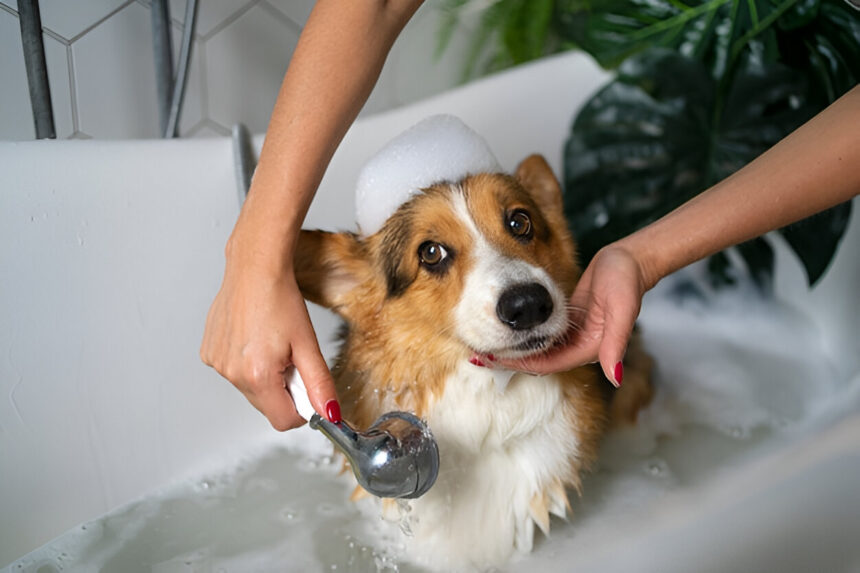Dogs are not just pets; they are beloved members of our families. Keeping our furry friends clean and healthy is essential for their overall well-being. One of the key components of a dog’s grooming routine is using the right shampoo. In this comprehensive guide, we will explore everything you need to know about dog shampoo – from choosing the best product to bathing techniques and common myths.
The Importance of Using Dog Shampoo
Just like humans, dogs need regular baths to keep their skin and coat clean and healthy. However, using human shampoo on dogs is a big no-no. Human shampoos are formulated for our skin’s pH level, which is different from that of dogs. Using human shampoo can strip a dog’s skin of its natural oils, leading to dryness, irritation, and other skin problems.
Dog shampoos are specifically formulated to suit the unique needs of a dog’s skin and coat. They help maintain the natural balance of oils, prevent skin issues, and keep your pup’s coat shiny and healthy. Additionally, dog shampoos often contain ingredients that help repel fleas and ticks, soothe dry or itchy skin, and address specific skin conditions.
Choosing the Right Dog Shampoo
When it comes to choosing a dog shampoo, the options can be overwhelming. Here are some key factors to consider to ensure you pick the right product for your furry friend:
1. Coat Type
Different breeds have different coat types, and their grooming needs vary accordingly. Whether your dog has a short coat, a long coat, curly fur, or is prone to shedding, there is a shampoo specifically designed for their coat type.
2. Skin Sensitivities
If your dog has sensitive skin or suffers from allergies, look for hypoallergenic shampoos that are free from harsh chemicals, fragrances, and dyes. These gentle formulas are less likely to cause irritation and are suitable for dogs with skin sensitivities.
3. Skin Conditions
If your dog has a specific skin condition such as dryness, flakiness, or dermatitis, choose a medicated shampoo that targets the underlying issue. These shampoos often contain ingredients like oatmeal, aloe vera, or medicated solutions to alleviate symptoms and promote healing.
4. Flea and Tick Prevention
For dogs that spend a lot of time outdoors or are prone to flea and tick infestations, consider using a shampoo that contains natural insect-repelling ingredients such as neem oil, cedar oil, or citrus extracts. These shampoos can help protect your dog from pesky parasites.
Bathing Techniques for Dogs
Giving your dog a bath can be a challenging task, especially if your furry friend is not a fan of water. Here are some tips to make bath time a more enjoyable experience for both you and your dog:
1. Pre-Bath Preparation
Gather all the necessary supplies before you start, including dog shampoo, towels, a brush, and treats for rewards. Brushing your dog before the bath can help remove loose fur and detangle knots.
2. Water Temperature
Make sure the water is lukewarm, not too hot or too cold. Dogs are sensitive to extreme temperatures, so it’s important to use water that is comfortable for them.
3. Shampoo Application
Wet your dog’s coat thoroughly and apply the shampoo according to the instructions on the bottle. Be careful to avoid getting shampoo in your dog’s eyes, ears, or mouth.
4. Rinsing
Thoroughly rinse your dog’s coat to ensure all the shampoo is removed. Leftover shampoo residue can cause skin irritation.
5. Drying
Use a towel to gently dry your dog’s coat after the bath. If your dog allows it, you can also use a hairdryer on a low setting to speed up the drying process.
Common Myths About Dog Shampoo
There are several myths and misconceptions surrounding dog shampoo that can lead to confusion among pet owners. Let’s debunk some of the most common myths:
1. Myth: All shampoos are the same.
Fact: Dog shampoos are specially formulated to suit a dog’s skin and coat needs. Using human shampoo on dogs can lead to skin problems.
2. Myth: Bathing a dog too often is harmful.
Fact: The frequency of baths depends on your dog’s breed, coat type, and lifestyle. Consult your veterinarian for guidance on how often to bathe your dog.
3. Myth: Natural shampoos are always better.
Fact: While natural ingredients can be beneficial, not all-natural shampoos are suitable for every dog. Always choose a shampoo that best meets your dog’s specific needs.
Conclusion
Choosing the right dog shampoo is essential for maintaining your furry friend’s health and well-being. By considering factors such as coat type, skin sensitivities, and specific needs, you can select a shampoo that keeps your dog’s skin and coat in top condition. Remember to follow proper bathing techniques and consult your veterinarian if your dog has any skin conditions or allergies. With the right shampoo and care, your dog will not only look great but also feel happy and healthy.





